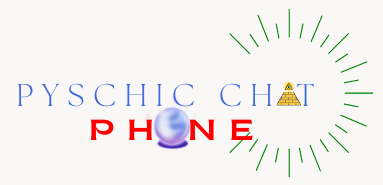When You Want The Best
Tarot Card Reading
Want to learn all about a tarot card reading?Tired of being in the dark? Get the answers you need with a tarot card reading. Shine a light on your future and learn what destiny has in store for you!
Psychic Readings
Psychic Chat
Psychic Live
The Fascinating Chronicles of Tarot Reading
Tarot card reading, an engaging tool of divination, has long been a subject of intrigue and wonder. The practice's origins are as enigmatic as the illustrations on the cards themselves. Tarot cards' earliest documentation dates back to the mid-15th century in various parts of Europe, notably Italy, France, and Austria. However, their usage then was mostly for recreational purposes, akin to modern-day playing cards. It wasn't until the 18th century that these mystical cards found their footing in the world of esotericism, fortune telling, and predictions.
The Best Tarot Reading Psychics!
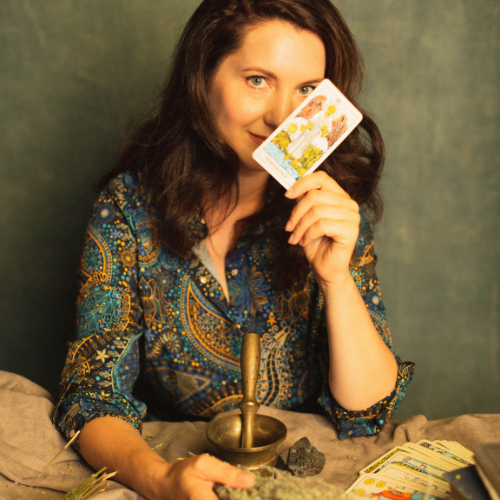
A Surge in Popularity: Tarot Reading in the Modern Era
The rise in popularity of Tarot card reading in recent years can be attributed to multiple factors. A revival of interest in spirituality and metaphysical practices has steered many towards Tarot's mystic allure. The accessibility of online platforms has also made it easier for interested individuals to learn about and access Tarot reading services, propelling its popularity even further. It's not uncommon these days to find smartphone applications and websites offering digital Tarot readings.
Moreover, a paradigm shift is occurring in how Tarot is perceived. Increasingly, it is being seen not as a tool for predicting the future but as a mirror for introspection, self-awareness, and personal growth. This empowering approach has helped diminish fear and misunderstanding around Tarot card reading, contributing to its widespread acceptance.
The Tarot deck comprises 78 cards, divided into two segments: the Major Arcana and the Minor Arcana. The Major Arcana contains 22 cards representing life's profound and essential aspects, while the Minor Arcana, with 56 cards, denotes more mundane and day-to-day elements. Each card bears symbolic imagery that holds unique meanings and interpretations, inviting the reader and the querent into a deeper understanding of life's mysteries.
The Significant Role of Tarot Reading in Divination and Beyond
In the realm of divination, Tarot holds a prestigious position. It provides a visually rich language for understanding and interpreting the human psyche and life's cyclical patterns. Tarot card reading, often employed for fortune telling, allows individuals to gain insights into their past, understand their present circumstances, and garner guidance for the future.
Despite its roots in predictions, modern-day Tarot reading transcends this framework. Tarot has morphed into a potent psychological tool, encouraging introspection and self-exploration. The cards serve as a mirror, reflecting our subconscious thoughts, desires, fears, and aspirations, offering a pathway towards self-understanding and personal transformation.
In conclusion, Tarot card reading, with its intriguing history, growing popularity, and profound significance, continues to fascinate and inspire individuals worldwide. Whether one approaches it for divination, fortune telling, or as a means for personal growth, the allure of Tarot is undeniable. Today, as we shuffle the deck, lay out the cards, and embark on a Tarot reading journey, we engage with a tradition that, while centuries old, is more relevant and enchanting than ever.
The Enigma of Tarot: Origins and Basic Understanding
Tarot Card Reading is a centuries-old practice steeped in mystery, symbolism, and intuition. Originating in mid-15th century Europe as a card game, the Tarot evolved into a profound tool for divination and personal growth by the 18th century.
At the heart of this practice lies the Tarot Deck, an intricate system of 78 illustrated cards divided into the Major Arcana and the Minor Arcana. The Major Arcana's 22 cards represent significant life events or stages of spiritual growth, while the Minor Arcana's 56 cards pertain to day-to-day matters and human experiences. Each card, with its unique imagery and symbolism, carries a distinct meaning.
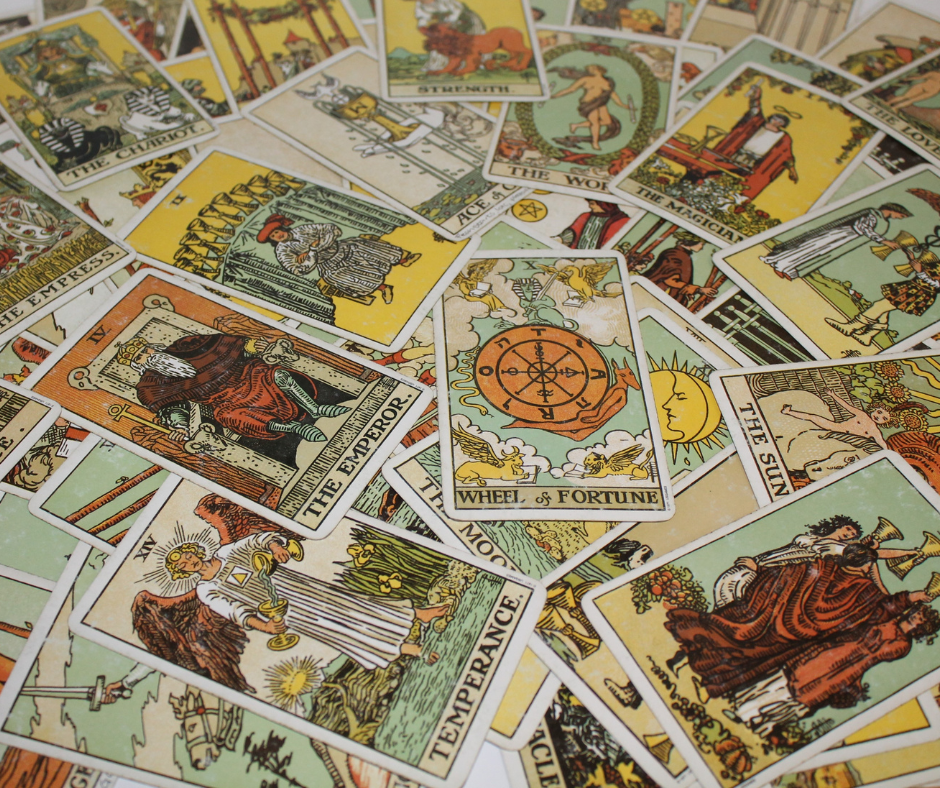
The Methodology of Tarot Interpretation: Card Meanings, Symbolism, and Intuition
The art of Tarot interpretation involves understanding the rich symbolism of the Tarot deck, coupled with the reader's intuitive skills. Every card in the deck holds a wealth of symbolic associations—archetypal figures, elements, numbers, and more—all working together to communicate a message.
For instance, in the Major Arcana, the Fool card symbolizes new beginnings and the spirit of adventure. The Death card, contrary to its ominous appearance, usually signifies transformation or the end of a certain phase in life, ushering in new beginnings. On the other hand, the Minor Arcana cards like the Three of Cups might represent celebration and friendship, while the Five of Pentacles might indicate hardship or insecurity.
The true essence of a Tarot reading lies not merely in the textbook meanings of the cards but also in the reader's intuition. Experienced readers often trust their gut feelings and personal insights while interpreting the cards, adding a unique flavor to each reading.
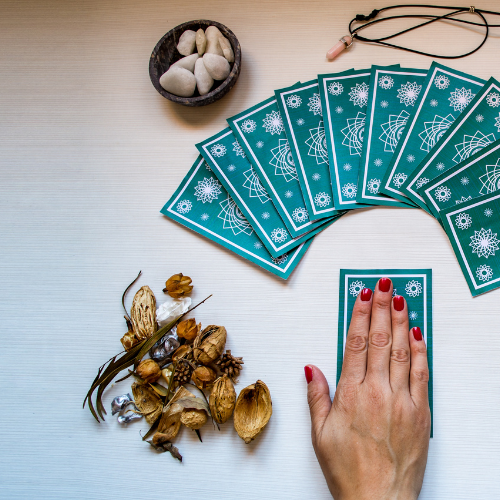
Tarot Divination: Usage and Insights
Primarily, Tarot Card Reading is used as a form of divination. It offers guidance to those seeking answers or clarity about their past, present, or future. In a typical reading, the querent (person asking the question) shuffles the deck and picks cards, which the reader then interprets based on their positions and relationships to one another. Numerous spreads or card layouts can be used, ranging from the simple one-card pull to the complex Celtic Cross.
However, modern usage of Tarot extends beyond divination. Today, many people use Tarot as a tool for self-reflection, decision-making, and personal growth. Rather than predicting the future, these readings focus on understanding one's inner psyche, identifying potential challenges, and exploring possibilities for the future.
In conclusion, Tarot Card Reading is a rich, multifaceted practice that blends symbolism, intuition, and interpretation. While its roots lie in divination, the contemporary usage of Tarot embraces a wider spectrum of personal exploration and growth. Whether used for introspection or guidance, the Tarot deck remains a profound tool, inviting us to explore the unknown and navigate our journey with insight and confidence.
Initiating the Process: Deck Shuffling and Question Formation
The journey of conducting a Tarot reading commences with the deck shuffling. This act is more than a randomization technique; it's a ritual symbolizing the intention to access the divine wisdom the Tarot represents. As the querent (the person asking the question) or the Tarot reader shuffles the deck, they focus their mind on the question they seek answers to.
The formulation of the question is crucial to the process. It needs to be clear, open-ended, and introspective, allowing the reading to unfold with meaningful insights. For example, instead of asking, “Will I get the job?” a better question might be, “What do I need to understand about my current career situation?”.
The Art of Card Selection and Arranging the Spread
Once the deck has been thoroughly shuffled, the next step is the card selection. Various methods are used, such as cutting the deck into three piles and reassembling it or fanning the cards out and choosing the ones that stand out intuitively. The number of cards selected depends on the type of Tarot spread being used.
A ‘spread' is a layout used to position the cards, with each position representing a different aspect of the question. Spreads range from simple one-card or three-card spreads to more complex ones like the Celtic Cross, which uses ten cards and provides a detailed analysis of the past, present, and possible future. The choice of spread is dictated by the nature of the question and the depth of insight sought.
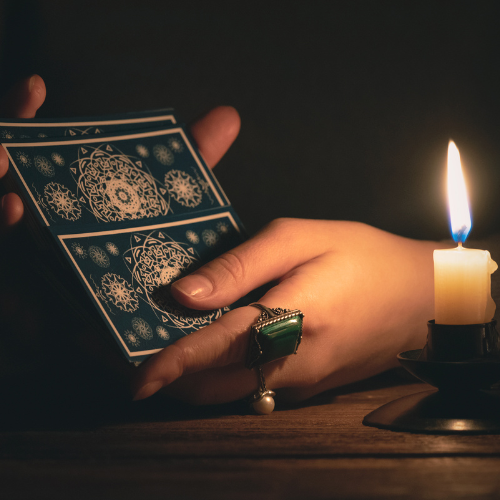
Interpreting the Cards: Reading Techniques and Psychic Intuition
Interpreting the selected cards is the heart of the Tarot reading. This process involves understanding the symbolic meanings of the cards, considering their position in the spread, and the relationships between them. The Tarot reader uses a blend of learned knowledge and intuitive insight to decipher the messages the cards convey.
While each card in the Tarot deck carries a fundamental meaning, the interpretation can change based on the context of the question, the spread used, and the intuition of the reader. This aspect makes every reading unique, even with similar card combinations.
The psychic element of the Tarot reading comes into play here, with many Tarot readers being intuitive or psychic. They use their intuitive or psychic abilities to tune into the querent's energy field or connect with their spiritual guides to provide additional insights during the reading.
In conclusion, the process of Tarot card reading is a harmonious blend of rituals, techniques, and psychic intuition. It begins with deck shuffling and question formation, proceeds through card selection and arranging the spread, and culminates in the interpretation of the cards. This intricate practice continues to serve as a powerful tool for those seeking guidance, clarity, or a deeper understanding of their personal life journey.
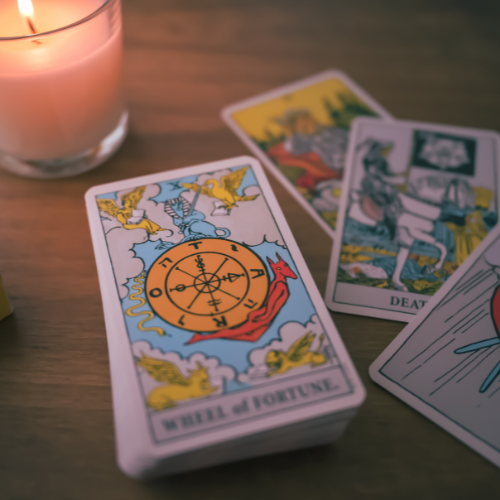
Understanding the Tarot Deck: A Universe within Cards
At the heart of every Tarot reading lie the Tarot cards themselves, each bearing deep symbolism and meanings. The Tarot deck, a cosmos of 78 cards, is divided into the Major Arcana and the Minor Arcana, each comprising a world of mystical insight.
The Major Arcana, with its 22 cards, delineates Fool's journey, an allegory of our spiritual and psychological development. The Minor Arcana's 56 cards capture the nuances of day-to-day life, segmented into four suits: Cups, Swords, Pentacles, and Wands.
Delving into the Major Arcana: The Fool, The Magician, and The High Priestess
Each card in the Major Arcana signifies a significant life event or spiritual lesson. Let's delve into the meanings of a few key cards: The Fool, The Magician, and The High Priestess.
-
The Fool: Representing the number zero, the Fool embodies the beginning of a journey and the infinite potential therein. It invites us to embrace the unknown with open-hearted curiosity and spontaneous joy. The Fool symbolizes new beginnings, spontaneity, and the need to make a leap of faith.
-
The Magician: As the first numbered card of the Major Arcana, the Magician symbolizes the power of transformation and manifestation. This card represents the ability to use one's mental and spiritual powers to create and influence real-world outcomes. It encourages us to tap into our innate creativity and resourcefulness.
-
The High Priestess: The High Priestess, sitting at number two, embodies the mystery of the subconscious mind and spiritual enlightenment. She encourages introspection, urging us to trust our intuition and inner wisdom. This card suggests a time for quiet reflection and a need to listen to our inner voice.
The Significance of Tarot Symbolism: Psychic Intuition and Spiritual Guidance
Tarot cards, with their elaborate symbolism, form a visual language of psychic intuition and spiritual guidance. The images, numbers, colors, and symbols on each card connect with our subconscious mind, allowing us to tap into hidden truths and unexplored potential.
Through their symbolic language, Tarot cards encourage us to reflect upon our lives from various angles, helping us navigate our journey with greater wisdom and insight. They can highlight our strengths, reveal our fears, offer options we hadn't considered, and ultimately, illuminate our path towards growth and fulfillment.
In conclusion, the significance of Tarot cards extends far beyond their decorative allure. Each card, embedded with profound symbolism and meaning, acts as a spiritual guide, reflecting life's diverse aspects. Whether we encounter the fearless spirit of the Fool, the creative spark of the Magician, or the introspective wisdom of the High Priestess, the Tarot journey opens us up to a deeper understanding of our inner selves and the world around us.
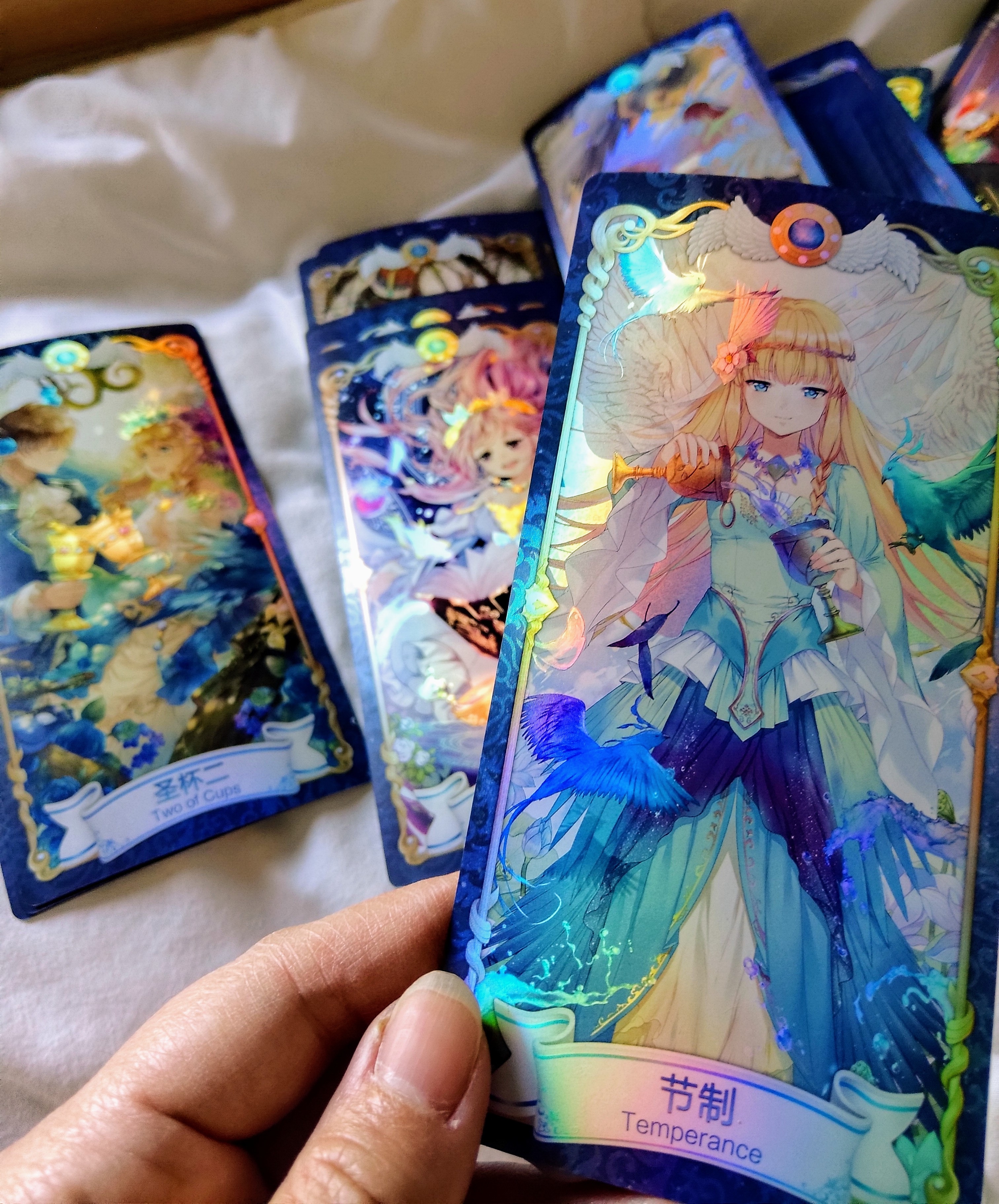
Decoding the Tarot: Significance of Spreads in Tarot Card Reading
In the fascinating world of Tarot Card Reading, the card selection is only part of the magic. The real essence of reading lies in the layout or pattern in which the selected cards are placed. This arrangement, known as a spread, is integral to the reading's complexity and energy flow, impacting the depth and nature of the insights garnered.
Each position within a spread represents a different aspect of the querent's (the person asking the question) situation, and the card in that position is interpreted with respect to its symbolism and the meaning associated with its location. Here's a look at some popular Tarot layouts that vary in complexity and application.
The Three-Card Spread: Simplicity and Clarity
One of the simplest and most commonly used Tarot patterns is the Three-Card Spread. Ideal for beginners and for answering straightforward questions, this spread's simplicity does not diminish its power. It typically represents ‘Past, Present, Future' or ‘Situation, Action, Outcome', offering clear and concise insights.
The Celtic Cross Spread: Detailed Insight and Understanding
One of the most iconic and comprehensive Tarot layouts is the Celtic Cross Spread. Comprising ten positions, each with a unique meaning, this spread provides a thorough analysis of the querent's situation. It encompasses a wide range of aspects, including the current situation, potential challenges, unconscious influences, past events, and possible outcomes. Owing to its complexity, the Celtic Cross Spread is suited for more elaborate questions requiring comprehensive insight.
The Horseshoe Spread: Progressive Guidance and Specific Themes
Another valuable Tarot layout is the Horseshoe Spread. This seven-card spread, laid out in the shape of a horseshoe, is ideal for providing a progressive overview of a situation. The cards are usually read from left to right, and the spread can be tailored to various themes, such as relationships, career, or spiritual growth. The Horseshoe Spread is perfect for exploring specific themes in detail and for answering questions about how situations may unfold over time.
The Importance of Choosing the Right Spread
The selection of the appropriate Tarot layout depends on the nature of the question, the depth of insight sought, and the reader's comfort with the spread's complexity. A well-chosen spread ensures the energy flow during the reading is aligned with the querent's needs, allowing for a comprehensive and resonant interpretation.
In conclusion, understanding the structure and purpose of different Tarot spreads is crucial in harnessing the transformative power of a Tarot reading. Whether one is drawn to the simplicity of the Three-Card Spread, the complexity of the Celtic Cross, or the thematic focus of the Horseshoe Spread, each layout offers a unique lens to illuminate the mysteries of our life journey.
Embracing the Tarot: Selecting Your Deck
Embarking on the journey of self tarot reading begins with selecting your deck. Choose a deck that resonates with you in terms of aesthetic, theme, and feel. Each deck carries its unique energy and symbolic language, and finding a deck that aligns with your personal energy can make your readings more intuitive and meaningful.
Creating a Calm Environment: Meditation and Introspection
Before you begin the reading, it's important to create a calm and peaceful environment. This could be a quiet space in your home, adorned with objects that make you feel relaxed and at ease. Light a candle or incense, play some soothing music or simply enjoy the silence. This serene atmosphere can help you connect with your intuition and achieve a meditative state of mind.
Begin by grounding yourself through a few minutes of focused breathing or a short meditation. This act helps you center your energy and intention, enabling a deeper spiritual connection with the Tarot.
Framing Your Question and Drawing Cards
Next, focus on the question you want guidance on. Remember, in self tarot reading, the focus is on introspection and personal growth, so formulate your question in a way that encourages self-exploration. Once your question is clear, shuffle the deck, allowing your intuition to guide you, and draw the required number of cards for your chosen spread.
Personal Tarot Interpretation: Combining Knowledge and Intuition
Interpreting the cards in a self-reading involves understanding the traditional meanings of the Tarot cards and connecting them with your personal circumstances. Each card has a host of symbolic meanings associated with it. Start with these basic meanings, then delve deeper into the nuances, considering the context of your question and your intuitive responses to the cards' imagery and symbolism.
Remember, self-reflection is a key aspect of personal tarot interpretation. As you look at each card, note your immediate emotional response and any thoughts or memories that come up. These personal reactions can often provide more insight than textbook meanings.
Reflecting and Journaling
After the reading, take some time to reflect on the messages and insights received. You may wish to journal about your interpretation and how it applies to your situation. This not only helps in processing the information but also tracks your personal growth and development over time.
In conclusion, reading Tarot cards for yourself is a profound practice of self-discovery and introspection. While it does require some knowledge of Tarot symbolism, the emphasis is on intuition, personal resonance, and the willingness to explore one's inner landscape. As you continue to engage with this practice, you will find that your personal Tarot readings become a powerful tool for self-understanding and personal growth.
Confronting the Myths
Tarot Card Reading, with its mystical allure and profound symbolism, has long been a subject of fascination and misunderstanding. Over the years, a number of myths and misconceptions have been woven around it, often casting it in a light of fear or skepticism. In this article, we'll debunk some common Tarot myths and shed light on the truth behind this enlightening tool of self-discovery.
Myth 1: Tarot is Evil or Associated with Dark Forces
One of the most prevalent myths about Tarot Card Reading is that it's evil, demonic, or associated with dark forces. This misconception likely stems from the Tarot's esoteric nature and its use in occult practices.
Truth: Tarot, in essence, is a tool for self-understanding, introspection, and personal growth. It's no more evil than a mirror reflecting our image. The cards are simply symbolic images representing various human experiences and archetypes. The purpose of a Tarot reading is not to invoke dark forces but to provide insight, guidance, and clarity to those who seek it.
Myth 2: Tarot Predictions are Set in Stone
Many people believe that a Tarot reading predicts an unchangeable future. This fatalistic view can make people fear Tarot readings or give them an unrealistic expectation of their predictive power.
Truth: Tarot readings are not meant to predict an inescapable future. Instead, they provide insight into the current energy patterns and potential outcomes based on these patterns. Tarot empowers us to make informed decisions and changes to create the future we desire. It's a tool for guidance, not determinism.
Myth 3: Anyone Can Read Tarot Cards
There's a myth that reading Tarot cards is as simple as memorizing the meanings and reciting them. This myth often undermines the skill, intuition, and understanding required for a meaningful Tarot reading.
Truth: While anyone can learn the basic meanings of Tarot cards, providing a nuanced, insightful reading requires a blend of intuitive insight, an understanding of symbolism, and the ability to contextualize the cards in relation to one another. Like any other skill, reading Tarot proficiently often requires practice, patience, and an open mind.
Conclusion: Shifting from Superstition to Enlightenment
The key to dispelling these Tarot myths lies in open-mindedness and understanding. Recognizing Tarot as a tool of introspection and guidance, rather than a vessel of evil or absolute prophecy, allows us to benefit from its insights. Dismissing the idea that anyone can effortlessly read Tarot emphasizes the respect for this skill and its potential for personal transformation.
In shedding light on these misconceptions, we hope to inspire a new perspective on Tarot Card Reading – one that respects its symbolic depth, honors its enlightening purpose, and appreciates the skill and intuition required for its effective practice.
Tarot: A Guide to Insight, Growth, and Self-Discovery – Conclusion
In our journey exploring the multifaceted world of Tarot Card Reading, we have delved into the history and symbolism of Tarot, examined how readings are conducted, interpreted the significance of the cards, and unveiled the truth behind common myths. As we draw this exploration to a close, let's take a moment to reflect on the remarkable benefits and transformative potential of this age-old divination tool.
Tarot, an intricate tapestry of symbolic wisdom, serves as a profound tool for introspection and personal growth. Its card archetypes reflect the myriad experiences and emotions of human life, offering us a mirror to explore our inner world. The process of interpreting these symbols awakens our intuition, expanding our understanding of ourselves and our place in the universe.
Beyond its function as a divination tool, Tarot acts as a guide on our spiritual journey. Each spread, each card draw, provides valuable insight into our current path and future possibilities. The beauty of Tarot lies in its ability to empower us, helping us recognize that we are the authors of our own destiny. Its predictions are not set in stone, but are maps we can use to navigate life's winding road.
Furthermore, Tarot prompts us to embrace open-mindedness and spiritual connection. It asks us to transcend superstitions and misconceptions, allowing ourselves to dive deeper into psychic intuition and enlightenment. Whether used for self-readings or professional consultations, Tarot encourages us to embrace our individual spiritual journey, fostering self-discovery and personal growth.
In conclusion, Tarot Card Reading is a remarkable guide, illuminating our life path with insight and clarity. As we navigate our personal journeys, the Tarot serves as a beacon of light, encouraging introspection, fostering growth, and empowering us with the freedom to shape our own destiny. Through the looking glass of Tarot, we not only learn about the intricate web of life but also uncover the extraordinary potential within us.
